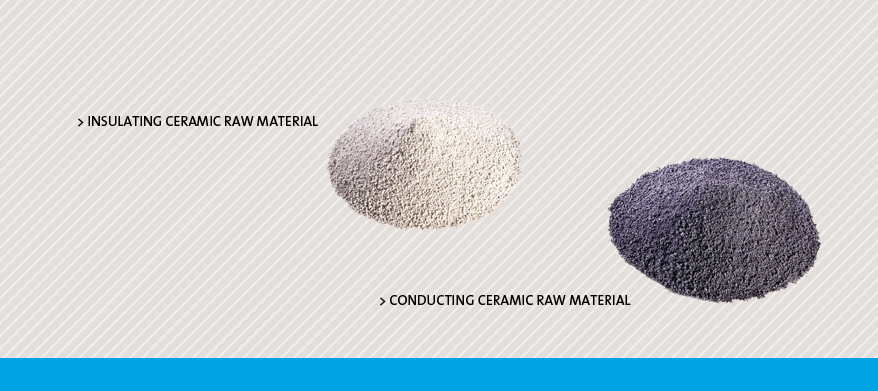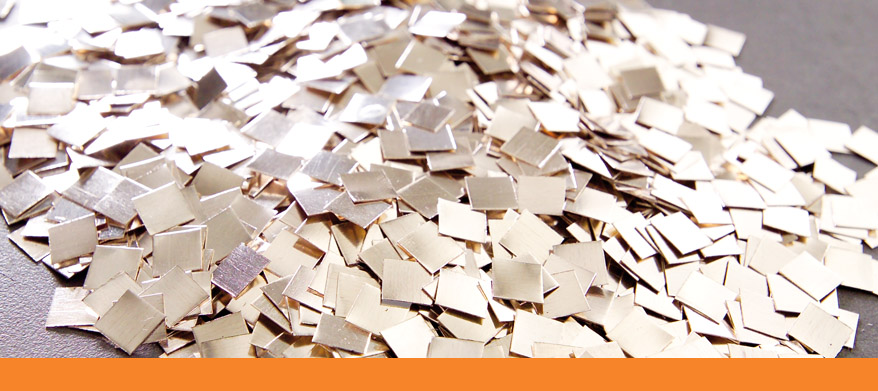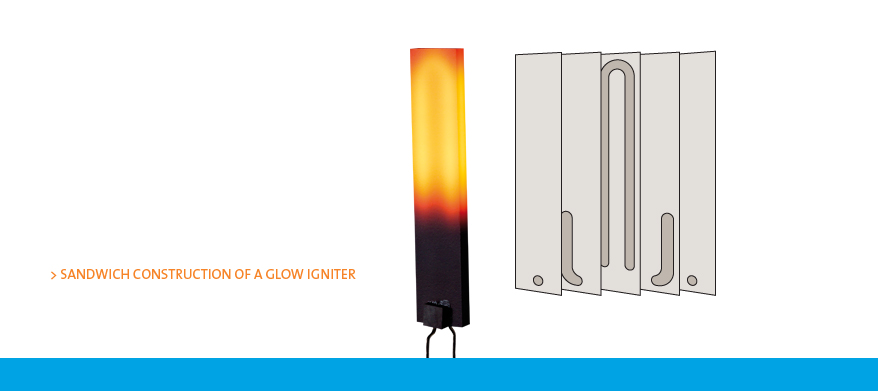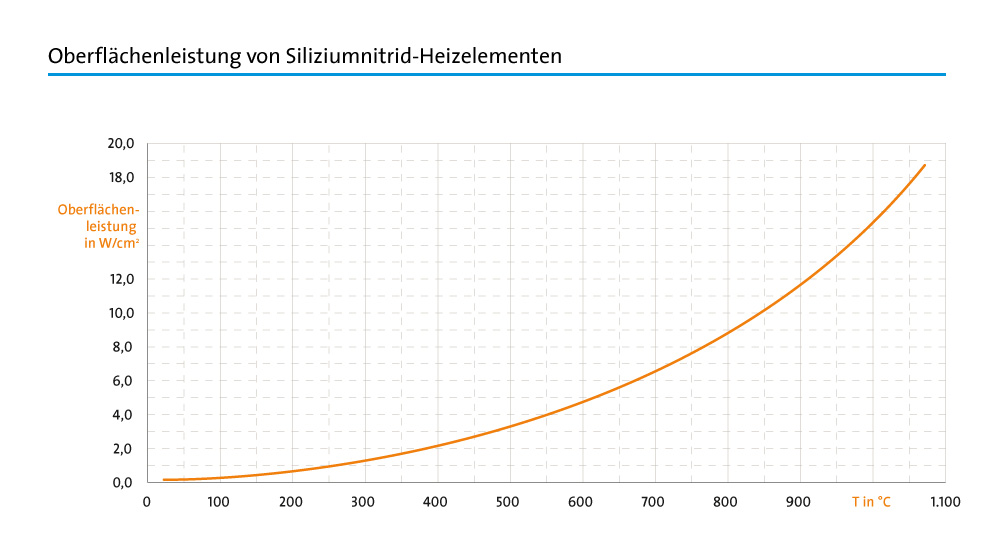Material properties
Learn more about the integral components of our ceramic heating element.
Technology / Material properties
Material properties of our fully ceramic heating elements
Our 100% ceramic heating elements made from silicon nitride and aluminum nitride have a number of advantages in comparison to metallic heating elements. Owing to the low thermal capacity of the material due to its low-density, ceramic material has a low heat capacity and therefore is well suited to handle temperatures up to 1 000 °C with very little energy consumption.
This extraordinary technology, which implements ceramic material able to conduct electricity uniformly sintered with an insulated ceramic housing, is able to deliver high performance consistently. Highly resistant to wear and oxidation, these ceramics guarantee outstanding durability and long life as well.
Basic Material
| Parameter | Scale unit | Si3N4 | AlN |
|---|---|---|---|
| max. temperature (Tmax) | °C | 1 000 | 1 000 |
| thermal conductivity (λ) | W/mK | 40 | 140 |
| temperature shock resistance (ΔT) | K | 500 | 400 |
| emissivity (1100 °C) (ε) | - | 0.96 | 0.90 |
| Young's modulus (E) | GPa | 320 | 310 |
| bending strength (δBB) | MPa | 400 | 200 |
| compressive strength (δD) | MPa | 2 000 | 1 200 |
| coefficient of thermal expansion (α) | 10-6 K-1 | 3 | 5 |
| density (ρ) | g/cm³ | 3.21 | 3.26 |
| specific heat (cp) | J/kgK | 750 | 740 |
| porosity (100 - % t.D.) | % | 0 | 0 |
| critical stress intensity factor (KIc) | MPa m½ | 6 | 3.3 |
| Weibull – modulus (m) | - | 7.9 | 6 |
The thermal shock resistance depends on the geometric shape of the heater.
Surface load
| Parameter | Scale unit | Value |
|---|---|---|
| in still air | W/cm2 | 15 |
| in moving air (40 m/s) | W/cm2 | 25 |
| in water | W/cm2 | 70 |
| maximum | W/cm2 | 150 |
Electrical parameters
| Parameter | Scale unit | Si3N4 | AlN |
|---|---|---|---|
| resistivity | Ω cm | 5 · 10-3 - 5 · 10-1 | 5 · 10-3 – 2 · 10-1 |
| isolation resistivity | Ω mm (20 °C) | 1013 | 1013 |
| dielectric strength | kV/mm | 25 | 25 |
Emission spectrum
Fully ceramic heating elements are long-wave infrared heaters with a maximum emission of 5 to 10 µm and a radiation coefficient of ε > 0.9.
Performance calculator
estimated needed heating power
W
Advantages in comparison
<The high compressive strength of 2 000 MPa and the high Young's modulus of 300 GPa of the Silicon nitride ceramic material are maintained at temperatures up to 1 000 °C. There is hardly any self-deformation.
- temperatures up to 1 000 °C
- remarkable mechanical strength
- integrated vacuum channels/Drilled holes
- heated areas from 1 mm2 up possible
- heated area formed to the contour of the product to be heated





